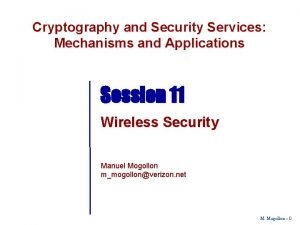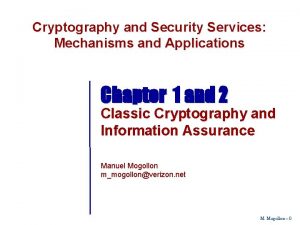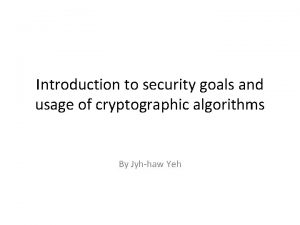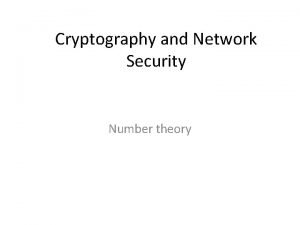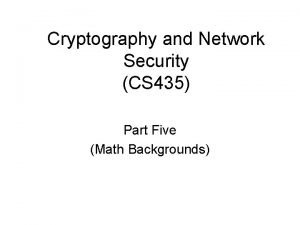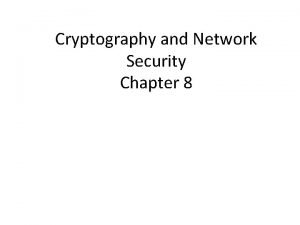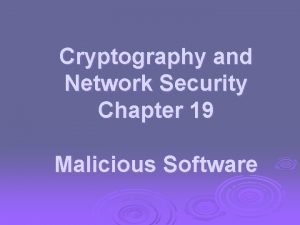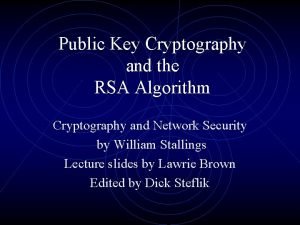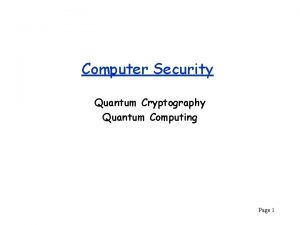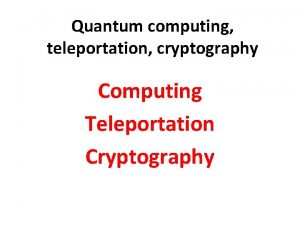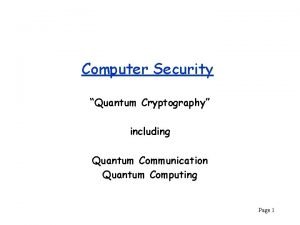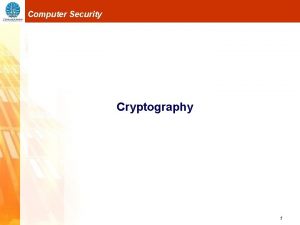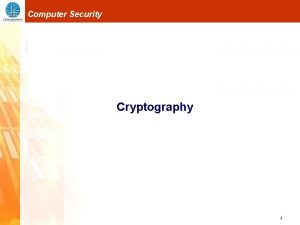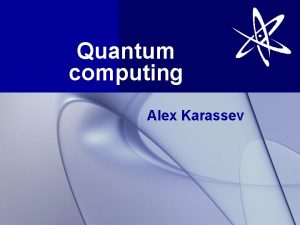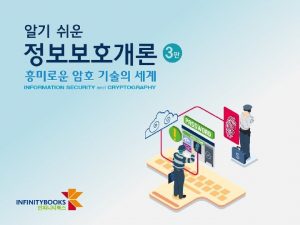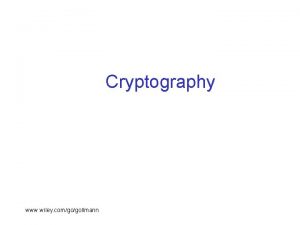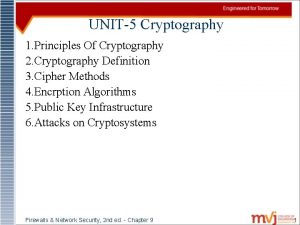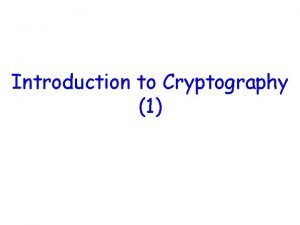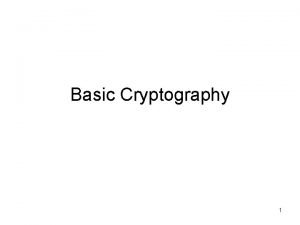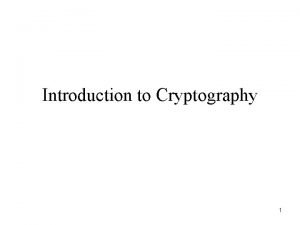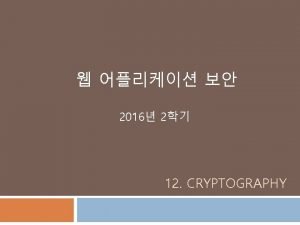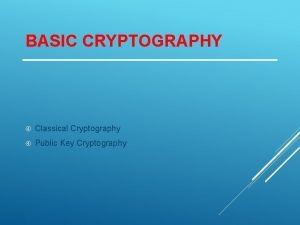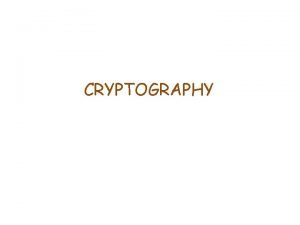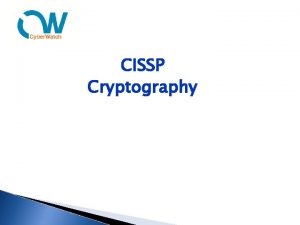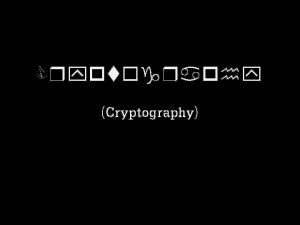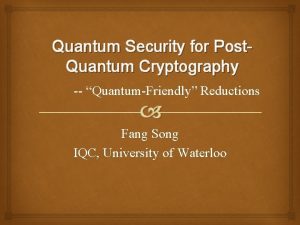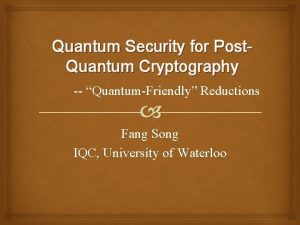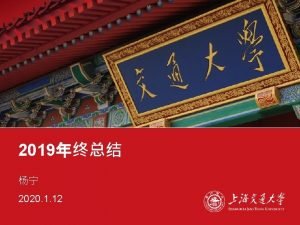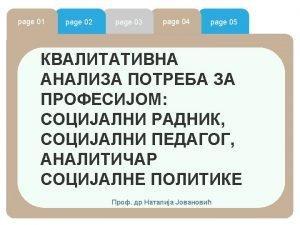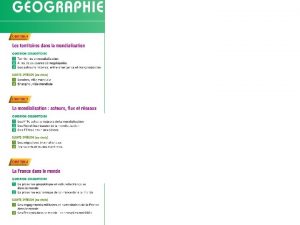Computer Security Quantum Cryptography Quantum Computing Page 1
























- Slides: 24

Computer Security Quantum Cryptography Quantum Computing Page 1

Quantum Cryptography NOT used to encrypt data! Goal, instead, is to detect eavesdroppers Can be used to exchange a private key Page 2

Uncertainty Principle In quantum mechanics, certain pairs of properties of particles cannot both be known simultaneously, e. g. , – Position and momentum of an electron (Heisenberg) If a measurement determines (with precision) the value of one of the properties, then the value of the other cannot be known Page 3

Photon Polarization Photons can be given horizontal or vertical polarization, or a superposition. Rectilinear coding of 0 or 1 : Diagonal coding of 0 or 1: or or Measuring rectilinear coding with a vertical filter yields polarization of photon. 0 blocked 1 Page 4

What if the wrong filter is used? or (blocked) (equal probability) measure diagonal measure rectilinear destroys state Page 5

Quantum Key Exchange The goal is to enable Alice and Bob to agree on a private key, even in the face of an eavesdropper, Eve. Like Diffie-Hellman, the protocol is still susceptible to a “man-in-the-middle” attack. But unlike Diffie-Hellman, the protocol does not depend on the difficulty of computing discrete logarithms or any other computational problem. Page 6

BB 84 Protocol (Bennet and Brassard) 1. Alice sends Bob a stream of photons randomly polarized in one of 4 polarizations: bit encoding: 0 1 2. Bob measures the photons in random orientations e. g. : x++xxx+x (orientations used) | - / / - (measured polarizations) 1 0 1 1 0 0 1 1 (encoded bit values) 3. Bob tells Alice in the open what orientations he used, but not what bit values he measured 4. Alice sends Bob in the open a list of positions at which the orientations are correct Page 7

Detecting an Eavesdropper Alice selects some random subset of k of the shared bits and reveals them to Bob in the open. If Bob notices any differences, then Eve must have changed a bit by guessing the wrong polarization when eavesdropping. Eve must read all (or nearly all) bits to recover enough of the shared key to be useful. So she’ll read the k bits. Eve has little hope of guessing the same polarization as Bob all k times. Each measurement has a ¼ chance of changing a bit value. The probability of not changing any values is (3/4) k – which can be very small if k is chosen large enough Page 8

In the “real world” In April 2014 China began installing a 2000 -kilometer quantum communications link between Beijing and Shanghai In August 2016 China launched the Quantum Science Satellite (QUESS) and plans to test quantum entanglement over large distances, and quantum key exchange Page 9

Quantum Computers The state of a computer consists of the contents of its memory and storage, including values of registers (including the program counter), memory, disk contents, etc. In a conventional computer each memory “unit” holds one value (e. g. , 0 or 1) at a time. Computation consists of a sequence of state transitions. But in a quantum computer, a memory unit holds a “superposition” of possible values. Page 10

Qubit (somewhat simplified) A single quantum “bit” which is 1 with probability p and 0 with probability 1 -p. When measured, outcome is either 0 or 1. Measuring a qubit changes its value! If outcome is 0, p is set to 0, if outcome is 1, p is set to 1. A qubit could be implemented using a photon to carry a horizontal or vertical polarization. Page 11

Quantum Entanglement Suppose two bits have value 00 with probability ½ and 11 with probability ½. If the bits are separated and measured at different locations, the measurements must yield the same values. E. g. , if first measurement is 0, second must also be 0. Entanglement also allows multiple states (e. g. , 00 vs. 11) to be acted on simultaneously. Difficulty in building a quantum computer is maintaining quantum entanglement in the face of environmental noise (quantum decoherence). Page 12

Qubit Theory A qubit is a superposition of two basis states, and (representing values 0 and 1), which can be thought of as north and south poles of a unit sphere. https: //commons. wikimedia. org/wiki/File: Bloch_sphere. svg I. e. , qubit is , where v 0 and v 1 are complex numbers such that |v 0|2 + |v 1|2 = 1. (|v 0|2 and |v 1|2 are probabilities of qubit being 0 or 1) can be written as Page 13

Quantum Gates Qubits are manipulated with quantum logic gates. Gates are just multiplications by unitary matrices. Hadamard matrix i. e. , gate operation is maps to and This gate randomizes either basis state to have equal chance of being measured 0 or 1. to Page 14

Factoring Large Primes In 1994 Peter Shor showed that a quantum computer can factor a number n in O(log 3 n) time. A similar result holds for solving the discrete logarithm problem. If a large-enough quantum computer can be built, then RSA and Diffie-Hellman key-exchange will no longer be secure. (But largest number factored with this algorithm as of 2015 was 21) Page 15

Shor’s Algorithm 1. Pick a random number 1 < a < n 2. If a shares a factor with n (i. e. , GCD(a, n) > 1), what a lucky guess! 3. Use a quantum circuit to find smallest r > 1 such that ar = 1 mod n, i. e. , find the order of a 4. If r is odd go back to step 1 5. If ar/2 = -1 mod n go back to step 1 6. GCD(ar/2 + 1, n) and GCD(ar/2 - 1, n) are factors of n Example: n = 15, a = 7, r = 4 a 1 = 7 mod n, a 2 = 4 mod n, a 3 = 13 mod n, a 4 = 1 mod n a 4/2+1 = 50, a 4/2 -1 = 48 GCD(50, 15) = 5, GCD(48, 15) = 3 Page 16

Analysis 1. 2. 3. 4. 5. 6. Pick a random number 1 < a < n If a shares a factor with n (i. e. , GCD(a, n) > 1), what a lucky guess! Use a quantum circuit to find smallest r > 1 such that a r = 1 mod n, i. e. , find the order of a If r is odd go back to step 1 If ar/2 = -1 mod n go back to step 1 GCD(ar/2 + 1, n) and GCD(ar/2 - 1, n) are factors of n After step 4, r is even, ar/2 ≠ 1 mod n. (Otherwise r was not smallest positive integer such that ar = 1 mod n. ) Thus ar/2 - 1 ≠ 0 mod n. After step 5, ar/2 ≠ -1 mod n. Thus ar/2 + 1 ≠ 0 mod n. Observe that (ar/2 - 1) (ar/2 + 1) = ar – 1 = 0 mod n So (ar/2 - 1) (ar/2 + 1) = kn for some integer k. But neither (ar/2 - 1) or (ar/2 + 1) is a multiple of n. Therefore by the prime factorization theorem, one contains p and the other contains q. Page 17

Analysis What is the probability that if a is chosen at random in step 1, r (the order of a) is odd? Claim: If the order of a is odd, the order of –a is even. Proof: Let r’ be the order of –a, and suppose r’ is odd. Then ar’=(-1*-a)r’=-1*(-a)r’=-1 mod n. If r’ < r, then the order of a is r=2 r’, and hence r is even, a contradiction. If r’ > r, then (-a)r=-1 mod n, so r’ = 2 r, and hence r’ is even, another contradiction. Thus at most half of the elements between 2 and n-1 have odd order. Page 18

Rough Intuition Behind Quantum Circuit Set up a quantum register 2 log 2 n entangled qubits so that probability register holds value t is proportional to f(t)=a t mod n, 1 ≤ t ≤ n 2. Range is chosen so that even if r is as big as n, f(t) will be periodic (smaller range shown in figure). Does not require time proportional to n or n 2. Think of t as time. Note that f(t) has period r. Page 19

Quantum Modular Exponentiation One way to implement is to use the traditional power -doubling algorithm: • Compute a 0, a 1, a 2, a 4, a 8, a 16, … mod n • Multiply powers as needed, e. g. , a 11 = a 8 a 2 a 1 • Multiplication can be implemented using addition circuits as we learned in elementary school • Use “reversible” addition circuit, which can be converted to a quantum circuit, which computes the probability distribution of the sum Page 20

N-point Discrete Fourier Transform DFT(f) = Wf With unitary normalization constant DFT becomes a unitary, i. e. , energy preserving, transformation. https: //en. wikipedia. org/wiki/DFT_matrix Page 21

Apply Discrete Fourier Transform Convert from time to frequency domain. Now probability that quantum register holds value i is proportional to i’th coefficient in DFT(f(t)). Coefficients with heavy weights are multiples of r. Page 22 Finish by sampling the quantum register.

Controversial Quantum Computer D-Wave Systems, Inc. , sells a quantum computer with 2048 qubits. Not a universal quantum computer – can’t execute Shor’s algorithm. Finds global minimum of an objective function using a technique called quantum annealing. Initial debate about whethere is actually quantum entanglement among the qubits – answer seems to be yes. Debate about whether the machine exhibits quantum speed-up. 2014 Science article says no, but 2015 Google research note says outperforms simulating annealing. Page 23

IBM Quiskit Open source quantum computing framework, including optimizing compiler (reduces number of Qbits), simulators, visualization tools. IBM provides access to public quantum computers (up to 20 qubits). https: //www. research. ibm. com/ibm-q/technology/devices/ IBM has built a 50 -qubit quantum computer, about the minimum number of bits needed to outperform a classical computer (“quantum supremacy”). But to solve RSA with 2048 -bit keys may require about 4000 qubits. Page 24
 Wireless security in cryptography and network security
Wireless security in cryptography and network security Security security security
Security security security Cryptography security services
Cryptography security services Security services and mechanisms in cryptography
Security services and mechanisms in cryptography Cryptography and network security 6th edition
Cryptography and network security 6th edition Introduction to network security and cryptography
Introduction to network security and cryptography Number theory in cyber security
Number theory in cyber security Firewall base layer
Firewall base layer Authentication in cryptography and network security
Authentication in cryptography and network security Intruders in network security
Intruders in network security Pigpen
Pigpen Primitive root in cryptography and network security
Primitive root in cryptography and network security Cryptography and network security 6th edition pdf
Cryptography and network security 6th edition pdf Cryptography and network security pearson
Cryptography and network security pearson Source
Source Cryptography and network security 4th edition
Cryptography and network security 4th edition Euler's theorem in cryptography
Euler's theorem in cryptography Finite fields in cryptography and network security
Finite fields in cryptography and network security Digital signature in cryptography and network security
Digital signature in cryptography and network security Modular arithmetic in cryptography and network security
Modular arithmetic in cryptography and network security Pgp in cryptography and network security
Pgp in cryptography and network security Euler's theorem in cryptography and network security
Euler's theorem in cryptography and network security Malicious software in cryptography and network security
Malicious software in cryptography and network security Introduction to cryptography and network security
Introduction to cryptography and network security Rsa algorithm in cryptography and network security
Rsa algorithm in cryptography and network security


